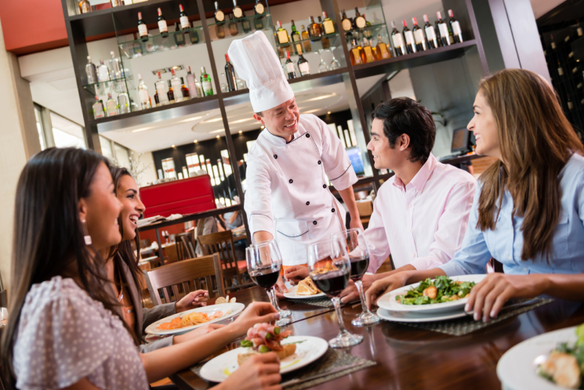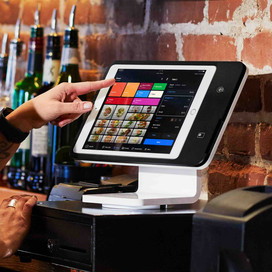Table of contents
In the restaurant world, staying at the top of your game often means staying on top of trending foods. Of course, this doesn’t mean you have to completely revamp your menu based on fleeting fads and the whims of Insta-famous foodie influencers. But you should pay attention to larger, industry-wide movements, restaurant menu trends and the shifting preferences of customers. And hey, adopting a quirky trend here and there can be fun, too. Ready to get inspired? Let’s take a look at five of the hottest restaurant menu trends for 2019, according to the National Restaurant Association. Consider whether they’re right for you, and how to add them to your menu.
CBD/cannabis-infused food and beverages
This year’s number one trend among chefs is also one of the most problematic, depending on where you live. CBD, or cannabidiol, is a hemp-derived ingredient. It doesn’t get you high, but the FDA has concerns about adding it to food and beverages because it has not been sufficiently tested. If you live in New York City, you’re out of luck — the health department doesn’t allow you to use it at all. However, if you live in a state where hemp and hemp-derived CBD is legal, you have the opportunity to experiment. And you might attract customers who are curious about items infused with cannabis and CBD. From coffee drinks to cocktails, salads, and cupcakes, the possibilities for CBD-themed menu items are as endless as a chef’s imagination.
Hyperlocal offerings
For hardcore locavores, backyard-to-table is the new farm-to-table dining. Instead of food sourced from a nearby farm or beer bottled at a brewery in town, there’s a new interest in products and ingredients produced even closer to home. Think produce grown in backyard or rooftop gardens, or spirits distilled on site. To pursue these options, you have to factor in needs like space for a garden and know-how when it comes to things like growing food, brewing beer, or distilling spirits. Still, if you aren’t an expert (or not yet), don’t let that keep you from exploring this opportunity. Hire staff to help you make a plan and realize your vision.
Globally inspired breakfast dishes
Trying the local cuisine is one of the most exciting aspects of travel. Many chefs are motivated to bring their favorite dishes home and add them to their menus, much to the delight of diners. Dishes like shakshuka (a North African favorite composed of poached eggs in tomato sauce) have been popping up on more and more menus as increasingly savvy and well-traveled diners become more open to global flavors. Before you add new items like this to your menu, do your research, traveling to the source or consulting with experts or natives of the region to make sure you know what you’re doing. And then do plenty of testing to make sure you nail the dish and respect the culture you’re celebrating.
Vegetable-centric cuisine
Eating your vegetables is getting a lot more exciting thanks to a trend toward vegetable-forward menus. Proof? Just look at how Brussels sprouts went from reviled to rock-star status in recent years. It doesn’t mean that you have to transition to a completely vegetarian or vegan menu, but as more health- and eco-conscious diners opt for more meatless meals, there’s an opportunity to experiment with local, seasonal produce and make it a focal point. From cauliflower rice to avocado toast to “impossible” burgers, veggies star in some of the most Instagrammed and talked-about dishes around. Get in on the action with your own meatless masterpieces.
Zero-waste cooking
Given the popularity of sustainability-focused movements like veggie-centric and hyperlocal food, it should come as no surprise that another top trend is zero-waste cooking. The problem of food waste is gaining more notice as both chefs and consumers are paying more attention not just to the ingredients they use but also those they throw away. Thus “throwaway” items like damaged produce, leftover vegetable parts, and even used coffee grounds are being repurposed and reimagined by chefs who are committed to reducing waste. To get started, evaluate your own practices: Do you reject all but the most perfect-looking produce? Do you toss items like carrot tops or broccoli stalks? Then start getting creative with these leftover items, like juicing fruit and veggie cores and pieces, and broiling less-than-beautiful tomatoes. And then compost what you truly can’t use. Let your customers know what you’re up to — you might even inspire them to rethink their definition of trash.
![]()












